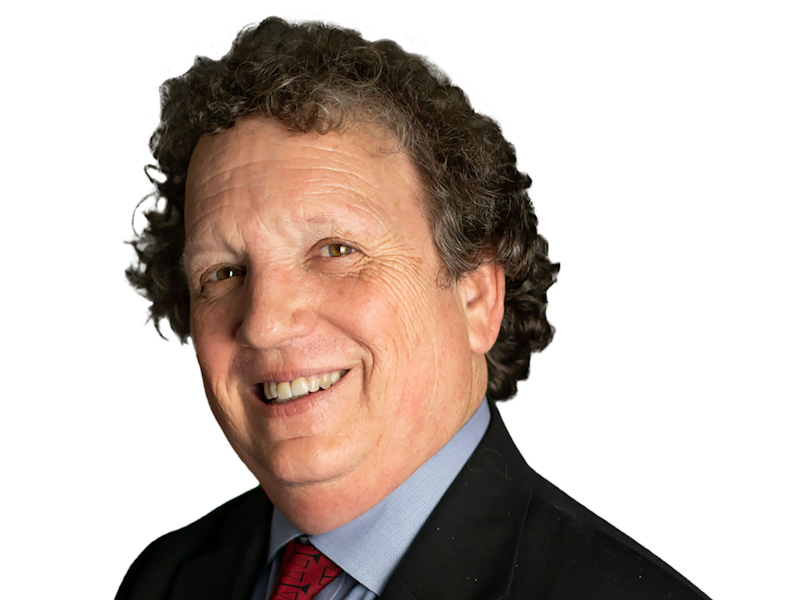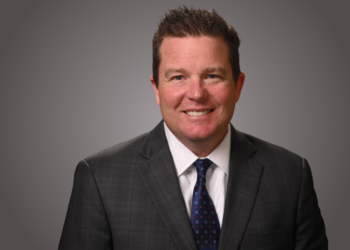Attorney at Law Magazine sat down with Bruce Buchanan, an attorney at Littler Mendelson P.C., accomplished author, captivating speaker, and respected Adjunct Professor to discuss his invaluable contributions to the field of immigration compliance.
AALM: What motivated you to pursue a career in law?
BB: I first wanted to become an attorney in high school and never wavered from my goal throughout college. Initially, I was motivated by the fact that I wanted to be a politician and every politician that I knew was also a lawyer. However, my motivation eventually shifted to the desire of helping others.
AALM: How did you develop your expertise in employment-based visas, family-based petitions, naturalization, asylum, and U visas?
BB: I was practicing labor law at a Nashville law firm when the sole immigration lawyer left and I was asked to take over that practice. I didn’t know much about immigration law at the time and kiddingly told the senior partner that all I knew about immigration law was “it involved foreigners.” After a month-long crash course in reading immigration books, I started practicing immigration law. We took a wide variety of cases, as we represented employers and advertised for family-based and humanitarian cases.
AALM: Can you share some of the most challenging cases you have worked on in your career, and how you navigated those challenges?
BB: While I was a prosecutor for the NLRB, I was the lead attorney for a case that went on for nine years – including a 13-week trial spread over 13 months. The matter involved a refusal to hire over 100 employees and a refusal to recognize and bargain with an incumbent union. Throughout this case, I faced hurdle after hurdle – filing numerous lengthy briefs, (including one over 200 pages) and appearing before administrative law judges and the Eighth Circuit Court of Appeals (one of few field NLRB attorneys ever to argue before a Court of Appeals) and finally litigating a compliance trial for several weeks before reaching a resolution. It took great perseverance and considerable personal sacrifice to navigate the obstacles and litigate for that amount of time. However, it was worth the experience gained and the matter resolution – over 50 discriminates (many others retired or died) were reinstated and backpay (including pension and health benefits) was awarded, totaling over $12 million.
In private practice, some of my most challenging cases have involved Notices of Intent (NIF), where in two cases, ICE has sought $767,000 and $505,000. Using my compliance background and understanding of how federal attorneys operate, I was extremely successful in lowering the fines. In the two cases mentioned, I reached an agreement to lower the fines by $267,000 (33%) and $230,000 (43%), respectively, and my clients were able to avoid litigation before the Office of the Chief Administrative Hearing Officer.
AALM: Tell us a little about your time as an adjunct professor at the University of Arkansas at Little Rock (UALR) William H. Bowen School of Law.
BB: I taught as an adjunct professor for 12 years from 1991 to 2003, while working for the NLRB. UALR’s law school had two divisions, day and night, so I was able to teach two nights a week while working at the NLRB during the day. To keep up with my classes, I also worked during the weekends and evenings. Teaching was so much fun that it became a true love of mine. I initially taught labor law, and later created and taught two other courses – employment law (which covered FLSA, FMLA, OSHA and WARN) and professional sports law (which covered how to negotiate an NFL contract with the NFLPA creating the fake player’s stats).
AALM: Could you tell us about your involvement as the editor of the Tennessee Bar Association’s Labor & Employment Law Newsletter?
BB: I have been editor for about 18 years and will be stepping down this summer. In each quarterly issue, I pick four cases or new laws to discuss. I have tried to offer a variety of cases – Supreme Court decisions, Sixth Circuit decisions, NLRB decisions, and an occasional Tennessee judgement, or a new applicable state or federal law. I really enjoyed editing some great articles and learning from some great attorneys.
AALM: What motivated you to co-author the book, “I-9 and E-Verify Handbook,” and what valuable insights does it provide for employers and legal professionals?
BB: At the time, I was fortunate to be working with Greg Siskind, the author of the first edition. As a regular blogger on immigration compliance for a number of years, I was thrilled to be asked to co-author the second edition. Writing a book is a great way to become a better lawyer in much the same way as being an adjunct professor.
The book is a great go-to resource for employers and fellow lawyers to get answers to their compliance questions in an easy to use format. Additionally, we have a chapter on state laws impacting employer immigration compliance (i.e., state E-Verify and related laws). Of course, I’ve had to update the state chapter through internal memos as states such as Tennessee and Florida have changed their E-Verify laws. With so much changing in the past six years in this field, a third edition will be coming out in the future, once the USCIS issues the new I-9 form and permanent virtual verification.
AALM: What do you envision as the future challenges and opportunities in the field of immigration compliance, and how are you preparing to address them?
BB: In my 17 years of practicing immigration compliance, the field has been ever-evolving. Currently, employers are struggling with whether their electronic audit trails pass muster with ICE (when ICE provides little guidance), properly completing physical reverification after the ending of virtual verification, and the Department of Justice’s Immigrant & Employee Rights Section becoming more aggressive in their investigation of citizenship status discrimination and unfair documentary practices.
Additionally, employers will soon be facing a new I-9 form and a new rule concerning permanent virtual verification. Details about the new form and virtual verification should be available by the end of summer.
I am preparing to meet these new challenges by continuing to educate my clients on immigration compliance and strenuously representing my clients before federal and state agencies.
AALM: How are you involved in the local community?
BB: Over my 20 years in Nashville, I have served on the board of several local nonprofit organizations, including Be About Change, the Lupus Foundation, the Nashville International Center for Empowerment and United Cerebral Palsy – a cause close to my heart as I have CP. Additionally, I have served on the executive councils of the Tennessee Bar Association’s Labor & Employment Law and Immigration Law sections.
AALM: Tell us a little about your life outside the office.
BB: My wife and I love sports and music, so we have season tickets to my alma maters – Florida State football and Vanderbilt baseball – and symphony season tickets. We enjoy traveling to ball games, beaches, historical sites, and foreign countries. Plus, we enjoy visiting our many grandchildren, since we only have one residing in the Nashville area. And can’t forget about spending time with our two senior dogs.
AALM: What is something your colleagues would be surprised to learn about you?
BB: I have a vast collection of political buttons and memorabilia. So vast, that I have a room in my house that holds my collection of thousands of buttons, posters, bandanas and 3D items. When I was in solo practice, I had a wall in the lobby filled with framed presidential campaign posters, bandanas and paintings. It was a great test to see how much history those seeking citizenship knew.
AALM: Anything else to add?
BB: Joining Littler last summer was a great way to continue my 41-year legal career. I get to work with some top-notch attorneys and practice in two areas that I’m passionate about – immigration compliance and labor law. What more could you ask for?








